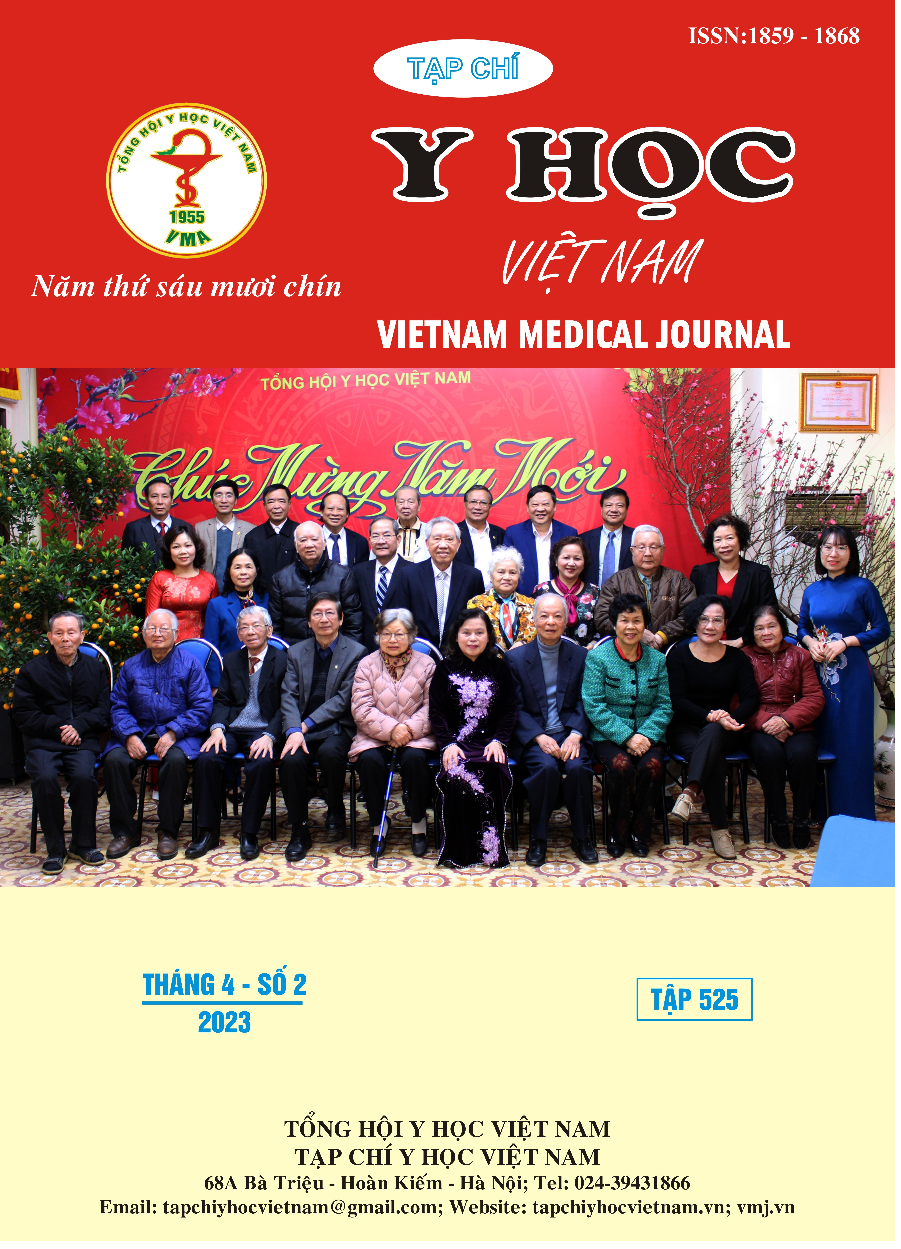RESEARCH ON THE RELATIONSHIP BETWEEN CLINICAL FEATURES, GLUCOSE, HbA1C WITH DIABETIC RETINOPATHY OF DIABETES
Main Article Content
Abstract
With the goal of clarifying the relationship between Blood pressure, blood lipids, glucose and HbA1c management with Diabetic Retinopathy (DR) to serve as a basis for the screening and prevention of diabetic retinopathy, we carried out this study. Conducting examination of 145 diabetic patients, average age 60.88 ± 8.11 showed that: The rate of retinopathy in the group with a history of hypertension (58.3%) was higher than the group without a history of hypertension (28.4%), p < 0.05, OR = 3.01. BMI had a statistically significant relationship with the risk of DR, the overweight and obese group had a higher rate of DR (70.8%) than the other group (37.2%) with OR = 4.1. An association between dyslipidemia and the risk of DR had not been found. The group with blood glucose > 7mmol/l had a higher risk of DR (OR = 2.2), the difference was not statistically significant. The poor HbA1c control group (>7.5%), had a higher DR rate than the moderate or good HbA1c control group (4.4-7.5%), respectively (54.1%, 28.6%), p < 0.05, OR = 2.80. Conclusion: Patients with obesity, hypertension and poor glycemic control had a high risk of DR with a OR index of 4.2; 3.01 and 2.2, p < 0.005.
Article Details
Keywords
Diabetes; Complications; Retinopathy
References
2. H. Imai, S. Honda, Y. Tsukahara, and A.J.C.r.i.o. Negi (2011). Macular edema formation and deterioration of retinal function after intravitreal bevacizumab injection for proliferative diabetic retinopathy," vol. 2, no. 3, pp. 314-318.
3. C. Pang et al. (2012). Determination of diabetic retinopathy prevalence and associated risk factors in Chinese diabetic and pre‐diabetic subjects: Shanghai diabetic complications study. Vol. 28, no. 3, pp. 276-283.
4. S.A. Vinores, N.L. Derevjanik, H. Ozaki, N. Okamoto, and P.A. J.M.E. (2000). Cellular mechanisms of blood-retinal barrier dysfunction in macular edema, pp. 13-24.
5. T. Yamamoto et al. (2012). Prevalence and risk factors for diabetic maculopathy, and its relationship to diabetic retinopathy in elderly Japanese patients with type 2 diabetes mellitus, vol. 12, pp. 134-140.
6. L.T.K. Minh, V.L.N. Trúc, V.V. Tân, and T.V. Trầm (2021). Tình hình bệnh lý võng mạc đái tháo đường và các yếu tố liên quan tại tỉnh Tiền Giang năm 2020," Tạp chí Nội tiết và Đái tháo đường, no. 46, pp. 117-122.
7. Z.D. Du, L.T. Hu, G.Q. Zhao, Y. Ma, Z.Y. Zhou, and T.J.I.j.o.o. Jiang (2011). Epidemiological characteristics and risk factors of diabetic retinopathy in type 2 diabetes mellitus in Shandong Peninsula of China," vol. 4, no. 2, p. 202.
8. S.S.I. Abougalambou, A.S.J.D. Abougalambou, M.S.C. (2015). Risk factors associated with diabetic retinopathy among type 2 diabetes patients at teaching hospital in Malaysia, vol. 9, no. 2, pp. 98-103.


